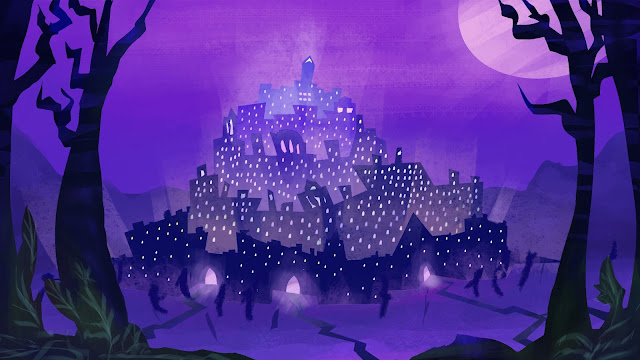Stanley Kubrick’s '2001: A Space Odyssey’ (1968) is a visually stunning film, made in collaboration with science fiction author Arthur C. Clarke. It is also a very strange film, though it masquerades as science fiction, upon closer inspection is defies genre. Kubrick himself once described the film as a ‘mythological documentary’ (Walker, 1971:241).
 |
| Fig. 1 Poster |
The film has very impressive special effects, Kubrick worked with Douglas Trumbull, among many others, to create sets that sometimes seem so simple, yet always beautiful, with a key focus on realism. The Variety review at the time said that 'There can be little doubt that the special effects created for “2001” are the equal of any the screen has come up with.’ (Frederick, 1968). The effects remain convincing even today and are truly remarkable for this reason.
 |
| Fig. 2 The Ship Travelling to Jupiter |
The importance of the visuals of the film far outweighs that of any plot or character in the film. The dialogue is minimal and functional and the few characters seem emotionless, they themselves functional to Kubrick’s vision. Roger Ebert writes that the film is 'meditative. It does not cater to us, but wants to inspire us, enlarge us.’ (Ebert, 1997) The most interesting character in the film is HAL 9000, the artificial intelligence tasked with running the ship in which the less interesting characters travel. HAL's death is perhaps the only moment in the film where the audience is expected to feel emotion for a member of the crew, that it is a computer they feel for might be unsettling.
 |
| Fig. 3 HAL 9000 |
Unnerving the audience seems to be a key point of the film, the camera remains at a distance for most of the film and any close up shot occurs at a moment of importance in the film. This works very well to disconnect the audience from what they are seeing on the screen. However, this may have been a key element for those who did not enjoy the film; Renata Alder of the New York Times wrote that the film is 'somewhere between hypnotic and immensely boring’ (Alder, 1968). The scene in which Frank watches a birthday message from his parents is emotionless and shown from a distance, it is very strange to watch, and it seems to drag on as nothing happens. Although nothing happens, the scene works well to build the strange mood of the film.
 |
| Fig. 4 An expressionless Frank watching a birthday message from his parents |
During production Kubrick worked with noted film composer Alexander North, but after North put in a considerable amount of time and effort into producing music for the film, Kubrick scrapped everything and used pre-existing works instead. This was not done kindly, as North found this out at the screening of the finished film. The decision to use pre-existing music in the film confused many people in the industry and it caused concern among film composers as they worried is this would become a trend that could affect their livelihoods. (Patterson, 2004:445-446) The score was seen by some as ineffectual and strange, described by author Randall D. Larson as 'a somewhat arbitrary incorporation of music not intended for such a purpose’ (Larson, 1985:311). Others found Kubrick’s decision to employ pre-existing classical music to be very good. Ebert considered North’s score a 'good job of film composition’, but noted that it ‘would have been wrong for “2001”’ and that the music used in the film 'brings a seriousness and transcendence to the visuals.' (Ebert, 1997).
The placement of the music is very important, too. There are moments of silence, with no music, sometimes there is the functional dialogue to fill this space, sometimes only breathing and then sometimes, nothing at all. The gaps seem to convey the nature of the void of the universe and also work to build tension. The loud classical music is very atmospheric, the audience expects things to happen when it is there, they expect the pace to increase. At different points in the film, the music, or lack thereof, can be quite frightening, as the viewer struggles to predict what will happen next. This underlying tension brings a sense of mystery to the film, which goes well with the strange plot and the vast emptiness of the environment. There is a particularly effective scene in the first act of the film with a monolith, where intense music is used for dramatic effect. There are similar scenes throughout the film, with different pieces of classical music used to build suspense. Almar Haflidason, writing for the BBC, said that ‘It's triumph lies in its scope of cinematic splendour and the attempt to marry some of man's most beautiful music to the infinite mystery of space.’ (Haflidason, 2001).
 |
| Fig. 5 The Monolith |
The film divides opinions, but it cannot be said that it has not made an impact. The film has been very influential and quotes and images from the film have been borrowed and parodied many times. The film continues to be a talking point today as film’s such as ‘Gravity’ (2013) and ‘Interstellar’ (2014) so clearly take their inspiration from it.
Bibliography
Alder, R. (1968). The Screen: '2001' Is Up, Up and Away: Kubrick's Odyssey in Space Begins Run. At:
http://www.nytimes.com/movie/review?res=9a04e6da1530ee3bbc4c53dfb2668383679ede (Accessed on 16.10.16)
Larson, R. (1985). Musique Fantastique: A Survey of Film Music in the Fantastic Cinema. Metuchen, NJ: Scarecrow Press.
Patterson, D. (2004). 'Music, Structure and Metaphor in Stanley Kubrick's 2001: A Space Odyssey' In: American Music 22 (3) pp.445-446 [Online] At:
http://www.jstor.org/stable/pdf/3592986.pdf (Accessed on 16.10.16)
Walker, A. (1971). Stanley Kubrick Directs. New York: Harcourt Brace Jovanovich.
Illustration List
Fig. 1 Poster
Kubrick, S. (1968). '2001: A Space Odyssey' [Film Still] At:



















































